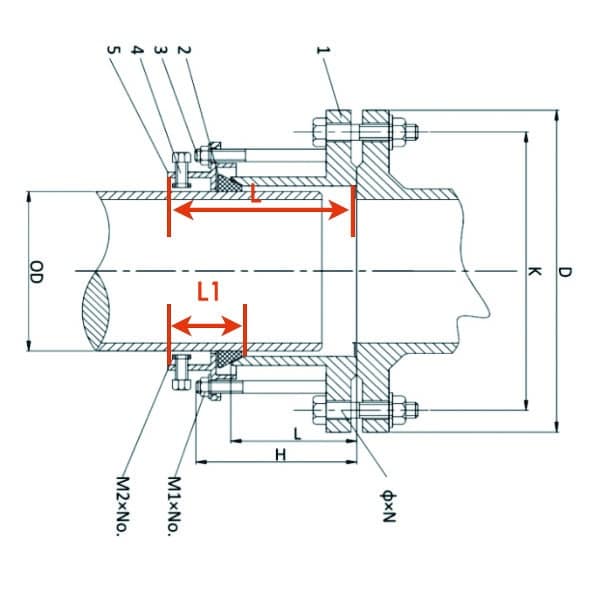Mechanical Joint Restrained Flange Adaptor Installation
Two type mechanical joint restrained flange adaptor is available, one is dedicated type which is designed for one pipe, antoher is wide range which is designed for many different pipe which pipe outside diameter is in our designed range.
Step 1
Measure the outer diameter of the pipe to be connected, and select a suitable flange adaptor according to the marked pipe OD (dedicated type) or pipe OD range (wide range type)on our mechanical joint restrained flange adaptor.
Please note you need to choose a flange adaptor which designed range include the pipe OD and can let the pipe OD close to the larger OD of the flanged adaptor design range, not the smaller OD, so that the seal is much more easier and better.
Step 2
Measure the distance between the gland end and the flange block L(as below marked), and then measure the distance from the gland to the bottom of the rubber ring L1, and then according to this L and L1 value, you need to mark two lines on the pipe to be connected , the first line is away from the end face of the pipe (L1 + 10) mm, because the end of the pipe must exceed the bottom surface of the rubber ring in order to seal it well, and the second line is away from the end of the pipe at L.

Step 3
Take side locking bolt(as above figure No. 4) back, so that the locking wedge does not interfere with the pipe insertion, insert pipe into the joint, insert the pipe until the first line (L1 + 10mm) pass through the outside plane of the gland(as above figure No. 5), the second line (L) should be outside the plane of the gland(as above figure No. 5), began to diagonal uniformly many times to force the bolt until the rubber ring touch the pipe circumference , and then tighten the bolts diagonally with a torque wrench until the torque reaches 45N.m.The rubber ring has been sealed with the pipe.
Step 4
Adjust side locking bolt(as above figure No. 4)so that they are in contact with the pipe, and then use a torque wrench to tighten them diagonally and evenly for many times, so that the torque value reaches 25N.m.Then it is OK.
Step 5
Slowly increase the test pressure of the pipeline, observe the situation of the flange adaptor, if there have leakage, tight the long bolt (such as the above figure No. 3) with a torque spanner util the torque to be 55N.m, if the pipe go outward, then tight the side locking bolts (such as the above figure No. 4) until torque to be added to 30N.m, and then add pressure slowly in the pipeline to observe. Until there is no water leakage.

